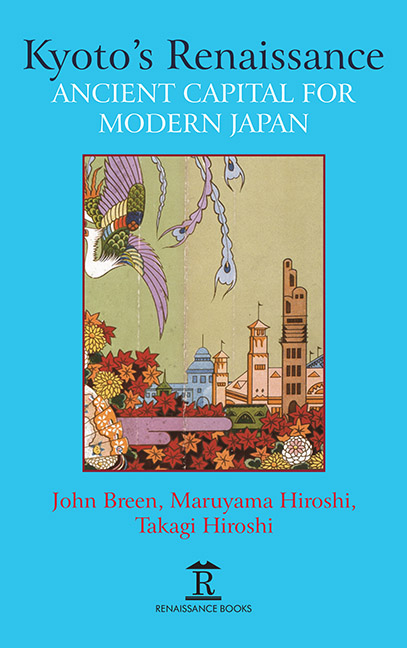Chapter 1 - The Emperor System and Kyoto: Images of the Ancient Capital
Published online by Cambridge University Press: 30 April 2022
Summary
INTRODUCTION: THE ORIGINS OF THE ANCIENT CAPITAL KYOTO
IN JANUARY 1883, the courtier, Iwakura Tomomi, argued that “Heiankyō is the only city since the time of Emperor Jinmu’s eastern expedition where one can still see vestiges of imperial rule.” Indeed, if we accept that the origin of Japan's cities is to be found in ancient capitals and domain castle towns in the Edo period, then only Heiankyō – or Kyoto as it is now known – is distinct. Only Kyoto survived the transformations of the middle ages and of the Edo period to emerge and flourish as a modern city. The Meiji period mantra was that Kyoto refused to decay as the city of Nara had. Kyoto, after all, was a city layered like no other: ancient capital, castle town and modern city. It was home to the Jurakudai Palace built in 1587 by the military overlord, Toyotomi Hideyoshi, and to Nijō Castle built by Tokugawa Ieyasu in 1603. What was the secret to its perpetual prospering? The explanation can only be that it remained throughout its history as the “seat” of the emperor.
Kyoto in the Warring States period, following the Ōnin War of 1467–1477, comprised the two autonomous towns of Kamigyō and Shimogyō, with the street Muromachi Street running four kilometers along the central north-south axis from Kuramaguchi dōri to Matsubara Street (or Gojō Street as it was known in the middle ages). The two towns were surrounded by earthen walls, and city walls punctuated by wooden town gates and turrettopped gates. Each town had its own festivals and was responsible for the welfare of its own people. From the fourteenth century, the eastern side of Kamigyō accommodated the Tsuchimikado Dairi or imperial palace, while court nobles, warriors, and merchants, such as the confectioner Kawabata Dōki, lived in neighboring Rokuchō. The building of the Edo period palace went hand-in-hand with the founding of early modern Kyoto. In 1603, at the very start of the period, the Tokugawa constructed Nijō Castle at the end of Nijō Street in the very north of Shimogyō; it was intended to rival the imperial palace. The south of Gojō at the southern end of Shimogyō was where Toyotomi Hideyoshi constructed the Nishi Honganji Temple in 1591, and where Tokugawa Ieyasu built Higashi Honganji Temple in 1602.
- Type
- Chapter
- Information
- Kyoto's RenaissanceAncient Capital for Modern Japan, pp. 3 - 32Publisher: Amsterdam University PressPrint publication year: 2020

